new posts in all blogs
Viewing: Blog Posts Tagged with: writing conference, Most Recent at Top [Help]
Results 1 - 25 of 44
How to use this Page
You are viewing the most recent posts tagged with the words: writing conference in the JacketFlap blog reader. What is a tag? Think of a tag as a keyword or category label. Tags can both help you find posts on JacketFlap.com as well as provide an easy way for you to "remember" and classify posts for later recall. Try adding a tag yourself by clicking "Add a tag" below a post's header. Scroll down through the list of Recent Posts in the left column and click on a post title that sounds interesting. You can view all posts from a specific blog by clicking the Blog name in the right column, or you can click a 'More Posts from this Blog' link in any individual post.

By:
Katrina DeLallo,
on 9/15/2016
Blog:
The World Crafter's Inkspot
(
Login to Add to MyJacketFlap)
JacketFlap tags:
Fantasy,
myth,
maps,
writing workshop,
writing conference,
worldbuilding,
The Reader,
introverts,
Introverts unite! Local author,
Add a tag
I'm going to write about the second thing first, because it was more recent and I still feel geeked out by it.
I'll be honest - it was sort of a cool/sad moment. I work part-time at a flower shop, which opens at 9:00 a.m. When I got into work, I discovered we had a wire-in order from PUTNAM, CONGRATULATING ONE OF THEIR AUTHORS ON HER BOOK BIRTHDAY!!!! I kid you not, I stared at that sheet for a full minute, thinking how cool that there was an actual traditionally published author IN MY TOWN and that she got signed by a really big publishing house!!
 |
| The names have been censored to protect the innocent :) |
I did feel a little sad that I was so far away from that being MY reality.
But, it was cool I got to deliver her flowers!
But, t was sad because she wasn't home so I didn't get to meet her or get a business card or be all like, "Yo, congrats, gurl!"
But, it was cool to see she posted a picture of the flowers on Twitter! :)
Neat, right?
The other and FIRST cool thing was that I attended a one-day writing workshop. I LOVE going to those things. They are so inspiring. Gets me really pumped up and in the writing groove again.
I have to say, though, that writing conferences contain some of the most introverted attendees in the world! (It is possible other conferences, such as those for actors, singers, musicians, or anything dealing with the artistic side of the brain contain introverts as well, but I have never seen more people less willing to cause a scene in real life than I see at writing conferences.)
Let me give you one moment from the workshop:
The speaker is giving the opening speech, all crazy-confident and funny. (Obviously, he is experienced. The public speaker in me suffers some serious envy.)
Mid-sentence, the speaker pauses and asks, "Are you looking for a seat?"
All attendees shift in their chairs, and cast surreptitious glances back.
The person in question hunches up like she's trying to disappear into a sweater and waves a don't-worry-about-it-hand. "It's okay, I'm just going to stand in the back."
Speaker: "There are seats available, if we could get people to point them out?" Questioning glance around the room.
Timorous hands come up, pointing to empty seats. Nearly inaudible voices say, "There's one here."
Person in question sort of drifts to a chair in the back and goes invisible as she settles.
Speaker goes on like nothing happened, while everyone else breathes relieved sighs that THAT awkwardness is over!
And this happened a couple times, not just once. In retrospect, it was super funny, but at the time there was this camaraderie of commiseration at BEING SEEN IN PUBLIC. It was especially bad when people had to leave to attend their 10-minute query pitch. Standing up in a room of people is hard, you guys! So many muttered regrets of "What was I thinking?" and "Should I go now, or wait another minute, since it's still five minutes before I have to pitch?" and "I wish I was sitting in the back! I'll know better next time."

I had a 10-minute pitch of my own, wherein I verbally pitched my query to a really awesome agent. Like, awesome. She was incredibly nice, and actually seemed to like what I had to say. For a writer, that is just really nice, to get the affirmation that your writing isn't as bad as you sometimes feel it is. (Just so you know, a verbal pitch is WAY harder than a round-table critique. At least with a round-table critique, you have your MS in your hand and you can read the printed word aloud and not really make eye contact with anyone. With a verbal pitch, it's just you tooting the merits of your manuscript, and I think most writers are very precious about their ideas. They cradle them close and don't share. Ever. So, saying, "this is what my story is about" and ENGAGING... is hard.)
But one thing I realized during my pitch, and which I think came through most strongly, was my love of world-building.
Guys, I could literally world-build all day and not write a lick of story. I love to figure out why MY world is the way it is (such as someone in the far distant history of a particular world making such an enormous mistake that the hero in the present day now has an issue with adamant), and I love to study how other people sprinkle in backstory and implement that into my novels, so I don't have the ever-present problem of INFO-DUMPING (oh cursed words!) or people scratching their heads and saying, "I don't understand what's going on..."
Also, maps.
 |
| My first ever cityscape - be impressed. This was HARD |
I love creating the history of my world. I also find it interesting that, for the most part, a lot of fantasies tend to have a sort of creation element. Like, this world exists, and while there may not be a One God figure (mine tend to have those, because that's the way I roll), there is often a strong draw from Roman or Greek myths, folktales, legends, and fairytales. I think it's because fantasy reveals a truth. Myths, legends, and fairytales contain that same kernel of truth.
"Fantasy remains a human right: we make in our measure and in our derivative mode, because we are made: and not only made, but made in the image and likeness of a Maker."
~ J. R. R. TOLKIEN, On Fairy-Stories
To end:
What is your favourite fairytale?
What is your favourite fantasy book/series?
Do you prefer Greek or Roman myths? (If you answer other, what's the other myth you prefer?)
Favourite fantasy artist?
What's the coolest thing that's happened to you this year?
God bless!
Cat
I often get asked the question, "I've been thinking about writing children's books, how do I get started?" I have an FAQ on my website that goes in detail on my typical answer, but part of that answer always includes "attend writing conferences."
Fortunately, I live in an area with a quite a few successful children's authors. As a result, each year we enjoy the opportunity to participate in or attend a number of local conferences devoted to writing for the children's market. One such writer's conference is our annual Writing for Charity conference.
 One of the unique things about the Writing for Charity conference is that all the proceeds for the conference to towards getting books into the hands of needy children. More than 40 local children's authors donate their time to present at this conference and give critiques. Some of this year's authors include Shannon Hale, Matthew Kirby, Jessica Day George, Ally Condie, Kristyn Crow, Sara Larson, and J Scott Savage. The programming covers picture books, MG, and YA. It doesn't matter if you're a rank beginner or fairly experienced, it will have something to benefit.
One of the unique things about the Writing for Charity conference is that all the proceeds for the conference to towards getting books into the hands of needy children. More than 40 local children's authors donate their time to present at this conference and give critiques. Some of this year's authors include Shannon Hale, Matthew Kirby, Jessica Day George, Ally Condie, Kristyn Crow, Sara Larson, and J Scott Savage. The programming covers picture books, MG, and YA. It doesn't matter if you're a rank beginner or fairly experienced, it will have something to benefit.
The conference itself is high caliber, but very low cost - $55 for the entire day. The conference will be on March 21, 2015 at the Provo Library. You can find more information on the Writing for Charity conference at www.writingforcharity.blogspot.com.
Characters can make or break a picture book. Donald Maass, literary agent and author of
WRITING THE BREAKOUT NOVEL, talks about the importance for novels to have larger-than-life-characters. These are characters that act in unusual, unexpected, or dramatic ways. These are characters that do or say things that we wish we could do, but don't ever dare to do or we are not able to do.
Larger-than-life-characters are not only important for novels, but they’re important for picture books too. Think PETE THE CAT, OLIVIA, CURIOUS GEORGE, and NO, DAVID. The characters in these stories are what make children want to read them over and over again. Want to write a great picture book? Start with a larger-than-life-character at its heart. The characteristics of larger-than-life-characters might include wit, spontaneity, compassion, daring, quirkiness, perseverance, cunning, humor, likeability, and so on.
Developing larger-than-life-characters is just one of many things I’ll be discussing from June 16-20 in the Picture Book Writing workshop I’ll be teaching at the
Writing and Illustrating for Young Readers (WIFYR) conference in Sandy, Utah. There are still a few slots open if you're interested.

You may be wondering–what ever happened to Tara? It’s been almost a month since she blogged. (Or you may not. You may be relieved your inbox has been devoid of my blog blivel. I made that word up, in case you’re wondering. A portmanteau of blog and drivel.)
Well, I’ve been traveling! I’ve actually changed out of my pajamas several times in the last few weeks!
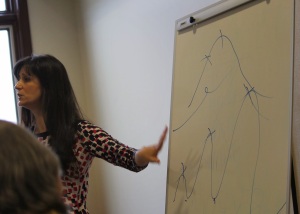
Not so pristine whiteboard.
At the end of March I drove down to MD/DE/WV SCBWI’s Annual Conference to present my workshop “From Concept to Dummy for Picture Book Writers”. About 70 writers attended–it was a full house in our little room. The attendees got a taste of my imbalance. Yes, my mental imbalance, but also my MS imbalance. Luckily I didn’t topple the whiteboard. I did, however, have one sinking moment when I thought I used a permanent Sharpie on the pristine white surface. It reminded me of NJ-SCBWI 2008 when I volunteered to hang signs on the aging plaster of the Princeton Theological Seminary, only to take chunks of wall with me when I removed the signs. Be forewarned, I cause mayhem and destruction at SCBWI events.
I think many will agree that the best part of the workshop was when we read the beginnings of successful picture books to discern the WHO, WHAT, WHERE, and WHEN in each opening line. Incorporating these details makes your reader ask WHY and eagerly turn the page to find out.
Many new writers mistakenly begin stories with, “My name is Jamie and I’m six years old.” This tells a reader nothing about the story to come. And more importantly, an editor who reads this plain first line will most likely stop there. YIKES. Not what you want. You have to break out of that slush pile with a line that captures the editor immediately.
After reading a dozen picture book openings, with me screaming WHY? WHHHHHYYYYY? and bending over in feigned painful anticipation, shaking my fists at the sky, I challenged the participants to rewrite their opening lines. Everyone was quite thrilled to get their own Tara WHHHHHYYYYY? in response to their improved introductions.
Writer Sarah Maynard summarized my workshop with bullet points, to which I’ve added my thoughts from the event:
- You have 30 seconds to grab their attention. MAKE IT GOOD!
Like a resume to obtain a job, you have limited time to make an impression with an agent or editor. They can have hundreds of manuscripts to read each week, so they give each one only a few moments to grab them. Punch that opening, make them want to continue reading.
- “Writing a picture book is 99% staring and 1% writing.”
There is A LOT of thinking involved in writing a picture book. Don’t worry if you’re not actually putting words on paper every day. Think about how to resolve problems in your story. Stare at your manuscript. Your subconscious will most likely be working on a solution and it will pop out while you’re doing mundane chores, like emptying the dishwasher, folding laundry, or taking a shower.

- Learn who YOU are as a WRITER.
A lot of authors, including me, espouse advice that may not work for you. Discover how YOU work best and stick with it. For instance, routine doesn’t jive with me, although it works for a lot of other people. I used to force myself into routine only to get frustrated, losing my creative mojo. Only you know how to thrive in your creative mode. It’s very personal. Don’t take advice that doesn’t serve you well.
- If it’s not apparent by words you’ve written, add an art note.
One attendee told me I was the first person to speak positively about art notes. Yeah, I think they get a bad rap. They’re absolutely ESSENTIAL to use if it’s not apparent what’s happening by your words alone. If the text says your character is smiling but you actually want them to frown, you need an art note to convey that. Of course, you should not use them to direct the entire shabang, but to ensure there are no misunderstandings. Which brings me to the last point…
- Don’t make an agent or editor guess!
I find that some new writers like to surprise the reader on the second or third page of a manuscript. This means the beginning is not entirely clear and the reader must guess what is happening. Well, what if your reader guesses wrong? Then they become hopelessly confused at the reveal and probably discard your manuscript. You don’t want an agent or editor to have to guess what is happening in your tale. Make it CRYSTAL either by the text or the addition of art notes. It can be as simple as “[art: the character is a bear]” to make everyone understand.
I thoroughly enjoyed my time in Maryland—the hospitality of the chapter went above and beyond. We had a lovely faculty dinner at the Craftsman-style log cabin home of former RA Edie Hemingway. Is there anything more writerly than that (I mean, c’mon, HEMINGWAY)? Edie has a charming home with a writing hut tucked into the woods.

Far better than my writing space—my unmade bed!

As I crawl back into my pajamas, I’ll be getting another blog post ready. This time, about my trip to Reading is Fundamental and the donation that my publisher and PiBoIdMo participants made possible, enriching the lives of children with BOOKS!
WRITE ON!


Spring is almost here, and that sense of spring - rebirth, renewal - has me thinking about making new vows for my writing career. It seems like every time I establish a goal, something unexpected happens and I end up off track.
That's why my first - and perhaps my only - vow is to get thee to a writer's conference ASAP. My only problem: the writer's guild workshop I want to attend is the same weekend as my state's press association convention. Since I'm the managing editor of a weekly newspaper, I feel like that should be the choice I make. Yet, our state's writer's guild is hosting some big name freelance and fiction writers who I have read (translate: adored and devoured every word) for years.
What's a writer to do?
No matter which conference I end up attending, I have three reasons why I am ready:
- Expand my horizons. I'm a freelancer by design and enjoy the newspaper and magazine business. Still, I've written two plays and I am intrigued with flash fiction. Attending a conference, especially one with a variety of classes, will let me investigate other types of writing that I may not have considered.
- Practical, hands-on experience. One conference I'm contemplating offers direct instruction instead of roundtable discussions. I like the idea of being given certain elements that I can twist and stretch to create a new piece. I'm considering it an experiment, of sorts, where I can try out the latest, greatest technology and decide if it will streamline my writing process.
- Opportunities to listen. One of the main reasons I'm excited about one of these conferences in particular is because several authors are reading their work. There's something intimate about an author sharing his or her creation, hearing the rhythm and intonation they give each word and sentence. It makes me think about phrasing and structure and how they cram so much information and power into a single word or section.
Sure I'm looking forward to networking, meeting new people, and ok, having a weekend getaway, but the selling point, for me, is the opportunity to get excited about writing once more and know that what I write makes a difference.
By LuAnn Schindler
 Want to learn how to write picture books? I'll be teaching a week-long workshop at the Writing and Illustrating for Young Readers (WIFYR) conference in June. It's hands-down, the best writer's conference in Utah, and one of the best in the U.S. In addition to my morning PB workshop, as well as other writing workshops, there will be afternoon presentations from editors, literary agents, and bestselling authors.
Want to learn how to write picture books? I'll be teaching a week-long workshop at the Writing and Illustrating for Young Readers (WIFYR) conference in June. It's hands-down, the best writer's conference in Utah, and one of the best in the U.S. In addition to my morning PB workshop, as well as other writing workshops, there will be afternoon presentations from editors, literary agents, and bestselling authors.
Check out the website for more info http://www.wifyr.com/. 

By:
Tara Lazar,
on 2/28/2014
Blog:
Tara Lazar
(
Login to Add to MyJacketFlap)
JacketFlap tags:
SCBWI,
Children's Books,
Picture Books,
Publishing,
Non-Fiction,
Writing for Children,
SCBWI-FL,
Writing Conference,
Kristen Fulton,
Peggy Robbins Janousky,
Add a tag
Today we’re lucky to have Peggy Robbins Janousky visiting to share highlights from SCBWI FL’s Picture Book Intensive. Take it away, Peggy!
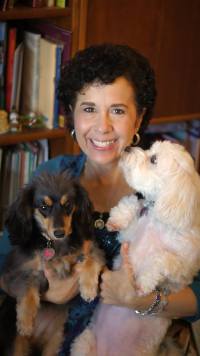 I have attended many picture book intensives over the years, but this one topped them all. Participants were treated to an all-star panel that included: agent Deborah Warren of East West Literary, editor Laura Whitaker of Bloomsbury, author and editor Andrea Davis Pinkney and author Toni Buzzeo.
I have attended many picture book intensives over the years, but this one topped them all. Participants were treated to an all-star panel that included: agent Deborah Warren of East West Literary, editor Laura Whitaker of Bloomsbury, author and editor Andrea Davis Pinkney and author Toni Buzzeo.
The presentations were practical, but powerful:
- Always bring your “A” game.
- Rhyme is not taboo, but bad rhyme is.
- Picture books are getting shorter and are being targeted for younger audiences.
- Show, don’t tell.
- Hook me and keep me hooked.
- Be passionate about your book and be able to pitch in just a few sentences.
One of the best things that was presented was the HOT list. These are the topics that editors and Barnes and Noble want now:
- Moments of the day
- School stories
- Learning concepts
- Holidays (MLK, Valentine’s Day, 4th of July, St. Patrick’s Day)
- Friends and family biographies
- Character-driven stories
- Original stories that every kid will love
- Interactive picture books
- Finding the new in the old
If you haven’t taken an intensive before, I strongly urge you to consider it. Intensives are exactly that, intense. They give you the opportunity to delve in deeper and they also give you the opportunity to get to know the presenters on a more intimate level. I came away from this intensive with a new sense of purpose and drive. I also came away with a few good friends. All in all, it was money worth spending.
I have to admit, I almost did not attend the Miami conference. I was having a pity party and I wasn’t really up for the company. I had broken my leg in three places. Needless to say, getting around was a wee bit difficult. I was ready to bail. I am glad I didn’t. The first page of my manuscript was read during “first page reads”. Much to my surprise, the panel loved it. One editor wanted to know who wrote it, an agent wanted to read more, and another editor wanted to acquire it. I have to admit, I was in shock. By the end of the weekend, thanks to the help of a good friend, I had signed with that agent. Just one month later… My bio and picture are up on the East West Literary website. The editor that I mentioned is considering three of my manuscripts. And I am still pinching myself.
I will tell you that this was not an overnight success. I have attended many conferences and taken copious notes. I have revised, cut, and revised some more. I have also had moments where I was so rejected that I thought I would never put myself through another critique again. So what’s the moral of the story? Never give up. Never let pity or self-doubt get the upper hand. Believe with all your heart that your day will come. Then get off your butt and get to that conference. Your happily ever after is waiting for you to show up!
Peggy Robbins Janousky uses her offbeat sense of humor to write offbeat picture books. When she is not writing, Peggy uses her time to rescue stray animals. Much to her family’s dismay, she keeps them all.
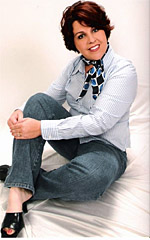 And thanks to Kristen Fulton for adding this summary of Andrea Pinkney’s workshop: The Write Stuff.
And thanks to Kristen Fulton for adding this summary of Andrea Pinkney’s workshop: The Write Stuff.
- Writers write every day, whether it be a holiday or vacation.
- Find your “twinkle”—what makes you sparkle around others?
- Establish immediacy—using voice, characterization, mystery and drama.
- Ask yourself, “Why does the reader want to come on this journey and what makes the reader stay on this journey?”
- Writing is fun—and hard work.
- Writing is re-writing at least 10 times.
- Just get started and keep going.
- Read every day, whether it be a holiday or vacation.
Kristen Fulton writes non-fiction picture books and is running an amazing non-fiction picture book retreat with loads of agents, editors, and authors on July 7-12. Check out her website for details!



By:
Tara Lazar,
on 2/26/2014
Blog:
Tara Lazar
(
Login to Add to MyJacketFlap)
JacketFlap tags:
Children's Books,
YA Fiction,
Writing for Children,
Writing for Teens,
Writing Conference,
Aubrey Poole,
Editor Panel,
Kat Brzozowski,
Laura Whitaker,
Stacy Abrams,
SCBWI,
SCBWI Conference,
SCBWI-FL,
Andrea Pinkney,
Add a tag
Let’s welcome Mindy Alyse Weiss back…she’s got the scoop from the recent SCBWI FL Conference. And boy, what a scoop it is! It’s chocolate fudge with rainbow sprinkles!
Ever wonder about an editor’s wish list? Wonder no longer! In the Editor Panel, Stacy Abrams, Kat Brzozowski, Aubrey Poole, Laura Whitaker and Andrea Pinkney discussed what kind of projects they’re seeking—and not seeking. There seems to be a trend away from dystopian and paranormal novels in YA.
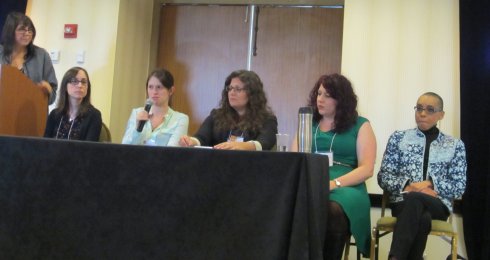
Stacy Abrams, Executive Editorial Director of Bliss and Entangled Teen
Contemporary (no paranormal or dystopian). Can have an issue in it, but the book can’t be about the issue.
Kat Brzozowski, Associate Editor, Thomas Dunne Books, MacMillan
Dystopian is hard. Would love a good YA mystery. Comes across as loving dark but does love girl meets boy and they kiss, light romantic contemporary stuff for girls.
With social media, if you do one thing well but don’t like another, don’t force it.
Aubrey Poole, Associate Editor, Sourcebooks Jabberwocky and Fire
Loves sci fi, YA, not looking at genre really—it’s the stories that stand out within a genre. More experimenting with format. Read more about her wish list here.
Laura Whitaker, Associate Editor, Bloomsbury Children’s Books
She’s tired of dystopian and paranormal YA. She wants to be immersed in a story so much that she’s physically removed from her own issues. She wants to read about real people. Contemporary, original voice. With MG and YA, networking is important. Do a lot of digital marketing initiatives. You can get a huge impact from doing a blog tour. “Help me help you.”
Andrea Pinkney, Vice-President and Executive Editor, Scholastic
More diversity, African American boys, adventure, mystery, fun. Contemporary stories. *You need to normalize and not make it about the problem, even with something like bi-polar.” She’s interested in a novel with a character who has piercing or a lot of tattoos.
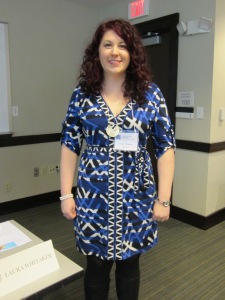
Laura Whitaker, Associate Editor, Bloomsbury
Besides writing a well-crafted story, how do you catch an editor’s attention? Laura Whitaker presented “Dating 101: What Makes YOU Desirable to an Editor”.
Tell her something interesting about your writing journey. What drew you to telling this story? Let her know any cool things you can share about yourself—show what makes you vibrant and unique.
Title—come up with something original that represents your work. If the title is the same when you’re published and there’s a story behind how you arrived at the title, marketing will want it later for a blog/Tumblr piece.
She’ll look at a query for 30 seconds to a minute. First thing should be the hook, then a two sentence synopsis (three if you have to), then info about yourself.
Your website is your calling card—especially for picture books.
Do you tweet out interesting, dynamic tweets? It’s the best way to build connections with other authors, agents, and editors. Twitter is more important for MG and YA.
Interact! Do you write about the process or what you’re working on? Marketing and publicity want to see your social media platform. The more social media, the better—but it is not a substitute for the craft.
Thanks again, Mindy!
Come back on Friday for the rest of the scoop from SCBWI FL. We’ll have vanilla and strawberry for those who don’t like chocolate. (Don’t like CHOCOLATE? Who are you people???)


Guest post from Cindy Stagg When I left teaching to raise a family, I decided that I would write a picture book. Easy, right? Tell a cute little story, get someone else to illustrate it, and voilá! You’re a beloved children’s author! It’s such a seemingly simple plan.
I wrote a few stories that I thought were pure gold. I bought The Writer’s Market Guide and sent my manuscripts off to publishers and agents whom I was sure would race to their phones to call me personally. I also started attending writing conferences and workshops, where I quickly learned why my phone wasn’t ringing off the hook.
Here’s the thing: writing a picture book is like painting the ceiling of the Sistine Chapel. It takes a great deal of hard work and plenty of finesse. You have to make the pictures and the words work together to tell a complete story, and you have to do it within a confined space. Sometimes, you’ll even find yourself doing it on your back! Whenever someone says to me, “Yeah, I think I’ll write a picture book one day,” I sort of laugh to myself, knowing they have no idea what they’re in for.
When I first started attending workshops and conferences (including
WIFYR) it was like taking a drink from a fire hose. There was so much information -- some of it even conflicting: It should be no more than a thousand words. It should be at least a thousand words. Make sure it has a good hook. It shouldn’t have a moral message. The character should solve her own problems. Make sure it speaks to children, but winks at adults. Make your main character appealing. Write a gripping beginning. The end of your story is crucial.
Whew!
Since then, I’ve learned to contain the information and knowledge I’ve gleaned into a manageable fountain. I’ve worked hard over the years to find out what it takes to write a good picture book. I’ve taken notes from Ken Baker, Rick Walton, and Candace Fleming. I’ve written, rewritten, and storyboarded. Most importantly, I’ve read hundreds and hundreds of picture books. The ones I’ve liked, I’ve tried to emulate. The ones I didn’t, I tried to figure out why.
What it comes down to is this: if you want to write a picture book, and I mean a good picture book, you’re going to have to work for it. Read lots of books and know your market. Attend conferences like
Writing and Illustrating for Young Readers, where Ken will be teaching this summer. Then, take everything you’re learning, and write. Write every day, because it’s the only way to improve.
Cindy will be assisting at this year's Writing & Illustrating for Young Readers conference, including assisting Ken as he teaches the picture book workshop. Cindy has always loved writing stories. Growing up in Arizona, she won essay contests and published stories in the school newspaper. She became a teacher because that was the more “practical” thing to do. Then one day, she was offered a job as an automotive writer (she’s also always been a car nut), and Cindy fell in love with writing all over again! “WIFYR has given me confidence in my ability and helped me create a network of friends and colleagues who have given me invaluable feedback,” says Cindy. She is excited to be assisting at WIFYR this year.Also, watch for the upcoming interview with Ken Baker on the
WIFYR blog.

By:
Administrator,
on 1/29/2013
Blog:
Margo Dill's Read These Books and Use Them!
(
Login to Add to MyJacketFlap)
JacketFlap tags:
speaking engagements,
school visits,
Middle Grade Novel,
Thank you notes,
writing conference,
Middle School Teachers,
Elementary Educators,
Book Club Possibility,
Finding My Place,
Finding My Place by Margo Dill,
Add a tag

I recently received two thank you notes–one in a roundabout sort of way–from children about my book, Finding My Place: One Girl’s Strength at Vicksburg. I thought I would share them here. These are my first ones from kids, and so I’m super excited!  I am not changing spelling and or punctuation when re-typing, and I am not sharing names
I am not changing spelling and or punctuation when re-typing, and I am not sharing names  .
.
This one is from my friend, Becky, who bought the book for her niece. . .
Dear Aunt Becky and Uncle Ron, Thank you for the Book “Finding My Place” I Loved it! Love, G
This one is from a friend of my mom’s (and mine!) that goes to her church. The friend bought the book for her granddaughter.
Dear Miss Dill, I really, really loved your book. I learned lots of stuff like people had to live in caves. My mom and grandma and I really think it was a really good book. It was a really intresting book. Thank you for signing my book. I am going to share your book with my class. Your friend, M. R.
There is not a sweeter thing than notes like this from kids. It brings a huge smile to my face.  I am busy scheduling school visits and writing conferences. If you are interested, you can find information at http://www.margodill.com and click on “Speaker Information.” To find out about Finding My Place, where to buy it, and an excerpt, please see: http://margodill.com/blog/finding-my-place.
I am busy scheduling school visits and writing conferences. If you are interested, you can find information at http://www.margodill.com and click on “Speaker Information.” To find out about Finding My Place, where to buy it, and an excerpt, please see: http://margodill.com/blog/finding-my-place.
photo found on Flickr.com by woodleywonderworks
I went to Lisa Mangum's presentation at the UVU Book Academy. She talked about FOUR things you need to shine as a newbie author:
VisionPassionFlexibilityEndurance Not what you expected, right? I'll expand.
Vision-Publishing is a business. Research your genre and the marketplace. Where do you see your book going and how is it going to get there? Do you have ideas for marketing your book? What is your platform?
Passion- Write every day. It makes you a better writer. Read. It makes you a better writer. Learn to self-edit and make every page better. You are a storyteller. Tell your story.
Flexibility- Publishing is a team effort. Trust your editor. Maintain balance in your life. Can you work creatively and market your book? Are you willing to publish digitally as well as traditionally? Can you live with a title or cover you don't love?
Endurance- Is your writing a hobby or career? Both are good choices. What are your goals? Can you write more than one book a yer? Can you meet your deadlines? Editors LOVE when writers meet their deadlines!
Patience + Persistence=Publication
How do you fuel your creative kindling?
With dragons, of course!
Janet Lee Carey, author of Dragonswood
is working shop with thirsty writers this Sunday, September 15
at the Poulsbo library.
I'm going!
How's that to fuel my story sparks?
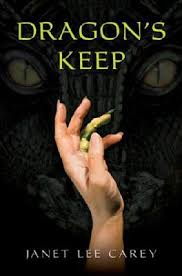
I've gushed over Dragonswood and Dragon's Keep
before.
They are among my top fantasy novels.
Janet writes compelling, wholly satisfying tales
so skillfully woven that I want to re-read them
as soon as I finish.
Northwest writers: if you're in the area, come join me
at this
Field's End event!

Who doesn't need such a creative boost?
After a whirlwind of crazed schoolishness,
I know I do!
Last night was writing night.
I finally sat alone with my manuscript, pen in hand,
distractions tucked away,
ready to blow through with a masterful fury.

But instead of mastery,
I just sat staring into the trees,
letting the wind rush past me
and all my pieces.
No story mastery.
But the space, the air!
The silence!
It was exactly what I needed.
To get me right first.

Do you ever de-fuzz?
It's the kind of work that doesn't count on your timecard,
but still matters!
Apart from our writing, our desires,
our hankerings to be published,
our accomplishments, our parenting,
our quirks and our failings,
we are all the same.
We are all people who need Love and Shelter
and Bread and Breath.

If you are ever busy, frantic, worried, overloaded,
or just stuck in your story,
try taking it down a notch.
Find a quiet place and de-fuzz.

Do something that doesn't "count" on your timecard.
Twirl. Stomp. Laugh.
Take off your socks and shoes. Wiggle your toes.
Paint with water.

Stretch out on the grass.
Watch clouds. Watch stars. Watch people.

Start a sketch notebook, a Favorite Words List, a Myths List,
a Sayings List, a Thankfulness List.

Breathe.
Play with dragons!

Treasure awaits.
A few fiery tales:




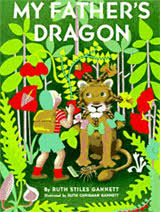

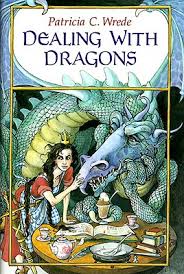
The Deliverers of Their Country - E. Nesbit, Lisbeth Zwerger
The Knight and the Dragon - Tomie dePaola
The Reluctant Dragon - Kenneth Grahame, Inga Moore
Saint George and the Dragon - Margaret Hodges, Trina Schart Hyman
My Father's Dragon - Ruth Stiles Gannet
Talking To Dragons - Patricia Wrede (ill. Trina Schart Hyman)
Dealing With Dragons - Patricia Wrede (ill. Trina Schart Hyman)
This is the fourth in a series of posts about the NJ-SCBWI Annual Conference. Visit all this week for insights from this first-class children’s book writing event.
…continued from previous post…
Kate’s final piece of contradictory advice—listen to what others say; don’t listen—was demonstrated by a conversation between Kate and her agent, Holly McGhee.
Kate finished a picture book manuscript and sent it off to Holly. The conversation began with Holly:
“No.”
Kate didn’t understand. “Huh?”
“No.” Holly repeated.
“But why?”
“I don’t care about the main character.” Holly didn’t even think it was a picture book. “This is a novel,” she said.
Slowly Kate realized that Holly was right. Kate wanted to write a picture book but a picture book is not what emerged. Deep down, she knew it was something more, but darn it, she wanted it to be a picture book. She was trying to get away with something, but Holly caught her.
Kate then circled back to the time after she had released THE TIGER RISING and BECAUSE OF WINN-DIXIE, two southern novels. She received many accolades. People loved her work.
So she began to write another “novel set in the south about nothing really at all,” like her two previous books. Once people loved her work, she felt compelled to continue along the same vein. She wanted everyone to keep loving her. But what was coming out was not genuine. The love and joy and play in her writing was gone. She was forcing herself to create something she did not want to write. And all to please everyone else, not herself. (Remember contradiction #2?)
Instead, she began a fairytale about a princess and a mouse. She showed it to a trusted friend. The response? “It’s not what you do best.”
Again, people expected her to write a southern novel.
But she pressed on. The princess and mouse was where her heart led her, and that is where she would remain. “Damn the torpedoes, full steam ahead!”
Damning those torpedoes was an excellent decision, for THE TALE OF DESPEREAUX won the Newbery.
In the end, Kate DiCamillo assured us that a life of a writer can be “terrible beyond all imagining, but it will be okay.” Another contradiction. We know this business is tough, but we still choose to write because we can’t NOT write.
I, for one, will try to embrace the terror from now on, because that’s what writing is—being in the depths of the unknown and yet in a constant state of discovery. The final contradiction.






![]()
This is the second in a series of posts about the NJ-SCBWI Annual Conference. Visit all this week for insights from this incredible children’s book writing event.
…continued from previous post…
After seven years, Kate decided she wanted to live a life in which she was always making art. She had fear as a writer, especially in revision, but instead of the terror paralyzing her any longer, it motivated her.
Kate introduced writing’s first contradiction: “you go on a long journey but stay in the same place.” The writing can take you anywhere, but you are still a lonely writer sitting at a keyboard.
Kate explained that a career in writing means you have to “chart a course through the contradictions.” She revealed five pieces of contradictory writing truths:
- Be absolutely rigid; Be loosey-goosey.
- Write only for others; Write only for yourself.
- Hide yourself; Reveal yourself.
- Compromise; Never compromise.
- Listen to what other people say; Don’t listen.
Kate had a good friend Oscar during that not-writing-but-wanting-to-be-a-writer seven-year stretch. One day they discussed belief in miracles and Kate told Oscar that she wanted to be a writer.
“Baby, that don’t take a miracle. That’s all on you,” Oscar said.
She had never realized that the whole of the task was on her. You have to do what you promise yourself. After years of brooding, she came to know that it was “easier to do the work than to NOT do the work.” Just in case we didn’t get it, she repeated this several times.
Yes, art and fear always go together. The constant feeling of uncertainty creates a tolerance for uncertainty. In other words, embrace the terror. It’s a prerequisite for success.
As I sat in the balcony, I had my own epiphany. Writing picture books is my comfort zone. My middle grade novel has been sitting untouched for more time than I’m willing to reveal. And it’s languishing out of pure fear: fear of ruining what I already adore, fear of not knowing what comes next, fear of writing more than 600 words IN A ROW. Why have I not embraced the fear before? Kate DiCamillo says she never works with an outline; “an outline kills it.” She writes to know what happens next. And that’s how I write, too. I enjoy discovering the story as I write. But I thought writing a novel like that was WRONG. Now I understand that nothing is wrong, it’s just the way I like to work.
So when Kate says “be absolutely rigid”, she means to commit yourself to the work. But when she contradicts this advice with “be loosey-goosey” she means the stories want love and joy and play. Go ahead and write without an outline, don’t plot where you’re going and you’ll journey somewhere totally unexpected. She equates this first contradiction with standing at a door and knocking. You must stand there, but how you knock is up to you. Shave and a haircut? A rock riff? Gentle tapping? How will you knock?
…to be continued…




This is the first post in a series about the NJ-SCBWI Annual Conference, held in Princeton, NJ this past weekend, June 8-10. Visit all this week for insights from this stellar children’s book writing event.

My daughter with Kate DiCamillo
Kate DiCamillo began her NJ-SCBWI keynote speech warning us that is was long and full of contradictory advice. I am certain no one minded. I mean, if you have an opportunity to hear Kate speak, wouldn’t you want it to last forever?
After college, Kate’s family asked, “So what are you going to do now?” Of course, the answer was simple: “I’m going to be a writer.” Simple and yet complicated—again, a contradiction. She didn’t have any desire to actually write, she just wanted to be a writer.
Instead, she worked in a greenhouse and came home with dirt crusted under her fingernails. Her mother would ask how her day went. “I’m a manual laborer!” Kate would yell. “How do you think my day went?!” Then she’d storm to her bedroom and slam the door.
After a few minutes, her mother would knock gently. “What are you doing now?” she’d ask.
“I’m writing,” Kate would answer. But Kate wasn’t writing, she was just sitting on her bed.
“I don’t hear anything,” responded her mother.
So Kate would turn on the typewriter with its gentle hum. “There! Are you happy now?”
But she let the typewriter hum away and sat on her bed, reading. The book that changed her life? It was THE ACCIDENTAL TOURIST by Anne Tyler. One scene with Macon and Muriel lying in bed struck her:
“Just put your hand here [Muriel's caesarian scar]. I’m scarred, too. We’re all scarred. You are not the only one.”
Those words made Kate want to get up off the bed and work that same magic. Those words transformed—they were broken-hearted but they also healed. Again, a contradiction. But one that Kate could not ignore.
So she began to look around her room. She watched the curtains flutter in the breeze and she noticed how their shadows looked like wings. She began to imagine a story about a woman who was paralyzed, lying motionless in bed, but staring at the same curtains and imagining how they could lift her up.
Kate began to write. Everything else disappeared. “It was like I was playing a piece of music I already knew, as if my fingers knew exactly what to do.”
But as soon as she realized her own dreary reality—a girl alone, sitting at a typewriter, she thought “wait—I can’t do this.” And she stopped writing.
The scary thing is that she realized this was the work she was meant to do. And the fear of that epiphany paralyzed her. She didn’t write for another seven years…
…to be continued…





By:
Tara Lazar,
on 4/9/2012
Blog:
Tara Lazar
(
Login to Add to MyJacketFlap)
JacketFlap tags:
Creative Writing,
Children's Writing,
Writing for Children,
Writing for Teens,
Writing Conference,
NJ-SCBWI,
Ryan Gosling,
RUCCL 2012,
New Jersey,
Add a tag
In 2008, I had the most nerve-wracking 20-minute drive of my life. My knuckles paled, my stomach gurgled, and my thoughts raced faster than the 35 MPH I could manage to clock on the highway. I was on my way to my first kidlit conference ever: the Rutgers University Council on Children’s Literature One-on-One Conference. AHHHH! Somebody help me!
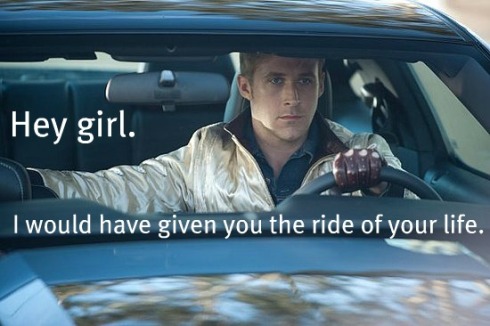
Thanks, Ryan. I know you would have, honey. But I digress…
I knew practically nada about writing for kids. I had slipped the first three pages of my middle grade novel into an envelope earlier that summer and waited patiently for the response. Thankfully, I was on vacation for two weeks of the final countdown. It made my vacation go by much more slowly. I recommend this tactic to anyone who needs to wait—go to a beach, plop a lounge chair in the sand, facing the ocean. Or facing Ryan Gosling in surfing trunks.
But when the vacation was over and the car hit our driveway, I jumped out and dashed to the post office. Awaiting me was a thick envelope, and remembering the drill from college admissions, I knew this meant a “yes”!
So off I went. I was so green. (Although I wore a cute purple top.) But when the event was done, I blogged all about it. Hopefully my notes help prepare you for this year’s conference. You can review them all here: RUCCL 2008.
But Tara, what does this all mean?
It means that the RUCCL 2012 Application is now available!
And guess who’s your morning “Success Story” speaker?
As Miss Piggy would say, “MOI!”
Yeah, I was pretty floored they asked me. Trinka Hakes Noble sent me an email saying, “I hope you don’t mind, but I put your name forward as our Inspiration Speaker for the mentee breakfast. Would you be interested?”
Would I be interested? Are you kidding? Of course I am! Wow! Whoopee! Holy macaroni! Keeno Yaccarino!
Wait a second, what did I just agree to…? Pale knuckles and gurgling stomach again?
Well, I am hoping many of my blog readers will be accepted to the conference this year. Because not only do I want to see you succeed, I’ll need your help during my presentation. (Details to come. No, you won’t need to hold a barf bucket. Well, maybe. OK, don’t quote me on that.)
So polish up those manuscripts! You’ve got until July 2 to postmark them.
And if you have any questions about the conference, please ask away in the comments!




 10 Comments on Rutgers University Council on Children’s Literature One-on-One Conference 2012, last added: 4/9/2012
10 Comments on Rutgers University Council on Children’s Literature One-on-One Conference 2012, last added: 4/9/2012










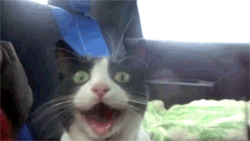

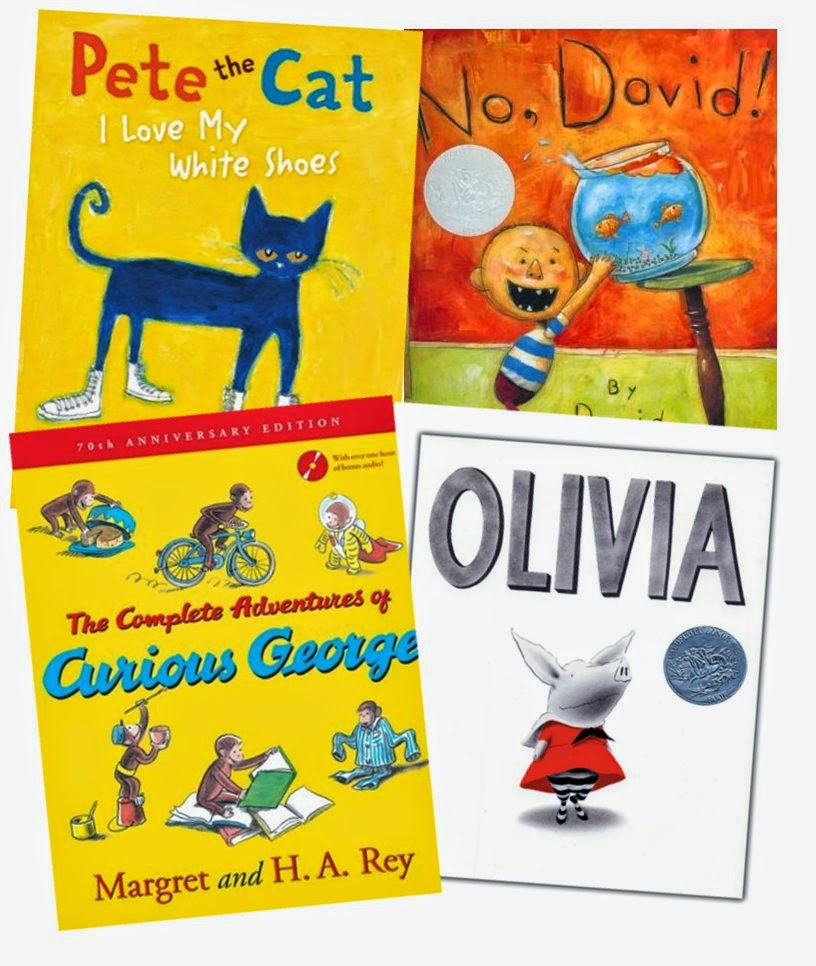





 I have attended many picture book intensives over the years, but this one topped them all. Participants were treated to an all-star panel that included: agent Deborah Warren of East West Literary, editor Laura Whitaker of Bloomsbury, author and editor Andrea Davis Pinkney and author Toni Buzzeo.
I have attended many picture book intensives over the years, but this one topped them all. Participants were treated to an all-star panel that included: agent Deborah Warren of East West Literary, editor Laura Whitaker of Bloomsbury, author and editor Andrea Davis Pinkney and author Toni Buzzeo. And thanks to
And thanks to 
























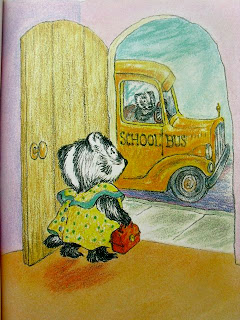

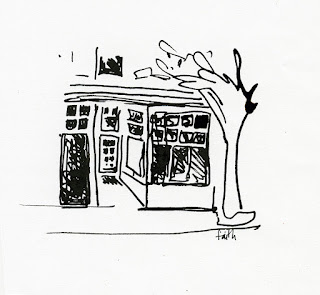




Thanks, Tara! I was just reading about Who, What, Where, When, and Why in another context. So when I read your post, I had an “aha” moment! Thank you for making the leap for me to the practical application for picture books.
P.S. Now I want a writing hut!
Your workshop was the highlight of the conference. Very helpful and so fun. Thank you.
hey Tara, I quite enjoyed your blivel! It helped while I was staring at my manuscript.
I attended their conference last year and it was wonderful! Now I’m twice as sorry that I missed it this year!!
Good to have you back! I’m going to try your analysis on first lines. Congratulations on your upbeat attitude and travel despite the MS. You inspire in so many ways! Enjoyed the peek at your writing space–I don’t have a nifty little cabin either.
Thanks, Tara. Jammie time again!
Greatest post ever! Needed that!
As I said in another venue, being there is always more fun. But this was a close second. Thanks for being there, for the stimulating talk, and for the good memories.
Fabulous post, Tara! Great to have you back…especially when you entertain us so well. :) :) And share your incredibly helpful blivel. :)
What a wonderful post on Earth Day! I was at the Sacramento’s SCBWI conference while you were having yours. Thanks for sharing the highlights.